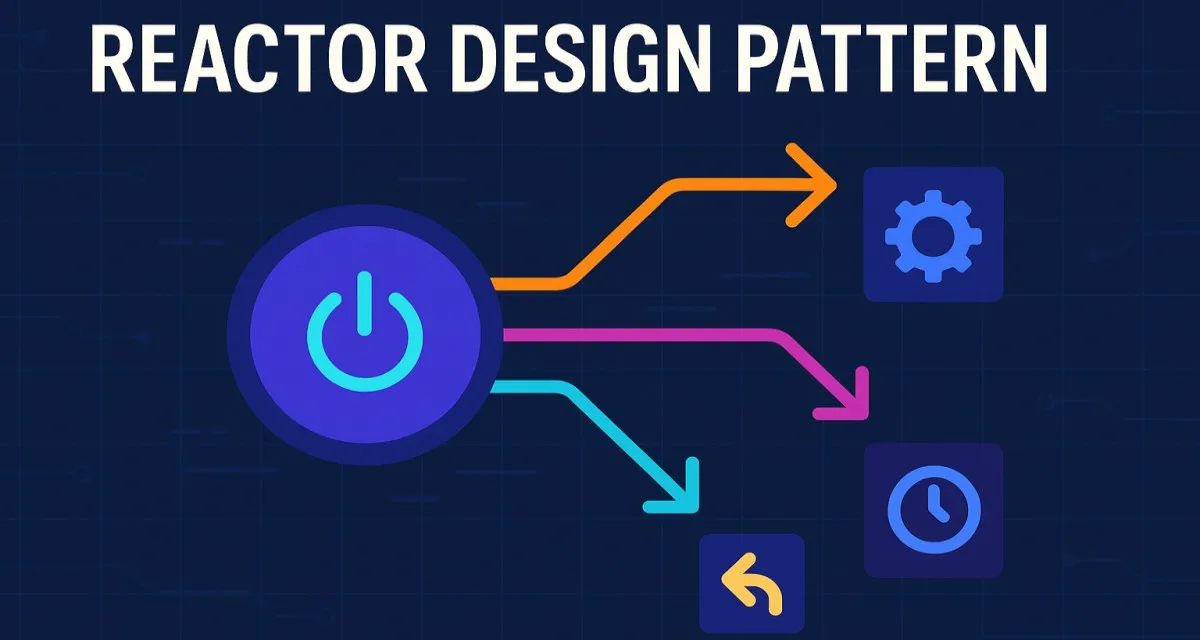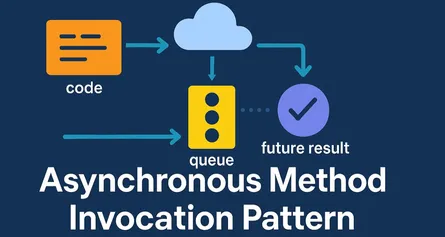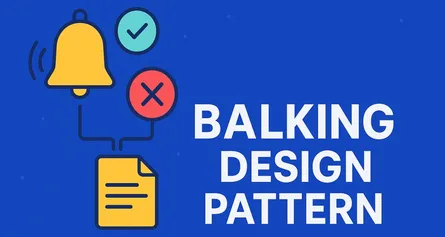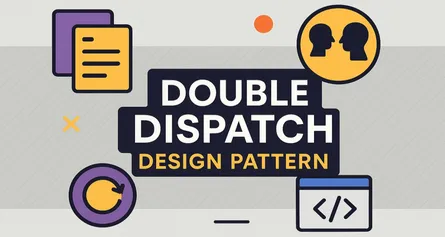
The Reactor Design Pattern: A Comprehensive Guide for Software Architects
Introduction to the Pattern
Definition and Core Concept
The Reactor design pattern is a behavioral pattern that handles service requests delivered concurrently to an application by one or more clients. It achieves this by demultiplexing incoming requests and dispatching them synchronously to the associated request handlers. This pattern is particularly effective for applications that need to handle multiple I/O operations without resorting to multithreading, thus avoiding the complexity and overhead associated with thread management.
Historical Context and Origin
The Reactor pattern was first described by Douglas C. Schmidt in the mid-1990s. It emerged as a solution to efficiently handle multiple simultaneous I/O operations in networked applications. By leveraging event demultiplexing mechanisms provided by the operating system (such as select, poll, or epoll), the Reactor pattern allows a single-threaded application to manage multiple concurrent connections.
Position within Behavioral Design Patterns
Within the realm of behavioral design patterns, the Reactor pattern stands out by focusing on the event-driven handling of service requests. Unlike patterns such as Observer or Strategy, which deal with object communication and behavior encapsulation, the Reactor pattern is concerned with the synchronous demultiplexing and dispatching of events to appropriate handlers.
Core Principles
The Reactor pattern operates on the following core principles:
-
Event Demultiplexing: The pattern uses a synchronous event demultiplexer to wait for events on multiple sources (e.g., sockets, files). When an event occurs, it identifies the source and the type of event.
-
Event Dispatching: Once an event is demultiplexed, the Reactor dispatches it to the appropriate event handler that has been registered for that specific event source and type.
-
Handler Registration: Event handlers are registered with the Reactor, specifying the events they are interested in. This registration enables the Reactor to know which handler to invoke when an event occurs.
-
Non-blocking I/O: The pattern relies on non-blocking I/O operations to ensure that the Reactor can continue to process other events without waiting for any single I/O operation to complete.
Key Components
The Reactor pattern comprises the following key components:
-
Synchronous Event Demultiplexer: Waits for events on multiple sources and returns when one or more events occur.
-
Initiation Dispatcher (Reactor): Manages the event loop, demultiplexes events, and dispatches them to the appropriate handlers.
-
Event Handlers: Define the application-specific logic to handle different types of events.
-
Handles: Represent the resources (e.g., sockets, files) that the application is interested in monitoring for events.
When to Use
Appropriate Scenarios
The Reactor pattern is suitable in scenarios where:
-
The application needs to handle a large number of concurrent I/O operations.
-
The overhead of multithreading is undesirable or unnecessary.
-
The application requires high scalability and responsiveness.
Business Cases
Business applications that can benefit from the Reactor pattern include:
-
High-performance web servers.
-
Real-time data processing systems.
-
Networked applications requiring efficient I/O handling.
Technical Contexts Where This Pattern Shines
Technically, the Reactor pattern excels in contexts where:
-
The operating system provides efficient event demultiplexing mechanisms.
-
The application can be structured around non-blocking I/O operations.
-
Resource constraints make multithreading impractical.
Implementation Approaches (with Detailed C# Examples)
Implementing the Reactor pattern in C# involves leveraging asynchronous programming features and the Socket class for non-blocking I/O operations. Below is a simplified example demonstrating the core concepts:
using System;
using System.Net;
using System.Net.Sockets;
using System.Text;
using System.Threading.Tasks;
public class Reactor
{
private Socket _listener;
public async Task StartAsync(int port)
{
_listener = new Socket(AddressFamily.InterNetwork, SocketType.Stream, ProtocolType.Tcp);
_listener.Bind(new IPEndPoint(IPAddress.Any, port));
_listener.Listen(100);
Console.WriteLine($"Server started on port {port}.");
while (true)
{
var clientSocket = await _listener.AcceptAsync();
_ = HandleClientAsync(clientSocket);
}
}
private async Task HandleClientAsync(Socket client)
{
var buffer = new byte[1024];
try
{
int received = await client.ReceiveAsync(buffer, SocketFlags.None);
while (received > 0)
{
var data = Encoding.UTF8.GetString(buffer, 0, received);
Console.WriteLine($"Received: {data}");
// Echo back the data
await client.SendAsync(Encoding.UTF8.GetBytes($"Echo: {data}"), SocketFlags.None);
received = await client.ReceiveAsync(buffer, SocketFlags.None);
}
}
catch (SocketException ex)
{
Console.WriteLine($"Socket exception: {ex.Message}");
}
finally
{
client.Close();
}
}
}In this example:
-
The
Reactorclass sets up a listening socket on a specified port. -
The
StartAsyncmethod accepts incoming connections asynchronously. -
Each client connection is handled in a separate asynchronous task, reading data and echoing it back.
This implementation leverages C#‘s asynchronous programming model to handle multiple client connections efficiently without resorting to multithreading.
Different Ways to Implement the Reactor Pattern in C#
The Reactor pattern is conceptually consistent, but its implementation can vary based on the underlying architecture and application requirements. Let’s explore a few modern approaches in C#, using features from the latest .NET versions and language enhancements like ValueTask, AsyncEnumerable, and IAsyncDisposable.
1. Using SocketAsyncEventArgs for High-Performance Scenarios
This is a lower-level API that minimizes allocation and supports high-throughput scenarios such as game servers or trading platforms.
public class AsyncSocketServer
{
private Socket _listener;
public void Start(int port)
{
_listener = new Socket(AddressFamily.InterNetwork, SocketType.Stream, ProtocolType.Tcp);
_listener.Bind(new IPEndPoint(IPAddress.Any, port));
_listener.Listen(200);
var args = new SocketAsyncEventArgs();
args.Completed += OnAcceptCompleted;
AcceptNext(args);
}
private void AcceptNext(SocketAsyncEventArgs args)
{
args.AcceptSocket = null;
if (!_listener.AcceptAsync(args))
ProcessAccept(args);
}
private void OnAcceptCompleted(object sender, SocketAsyncEventArgs args)
{
ProcessAccept(args);
AcceptNext(args);
}
private void ProcessAccept(SocketAsyncEventArgs args)
{
var client = args.AcceptSocket;
var buffer = new byte[1024];
var readArgs = new SocketAsyncEventArgs();
readArgs.SetBuffer(buffer, 0, buffer.Length);
readArgs.Completed += (s, e) => ProcessReceive(client, e);
if (!client.ReceiveAsync(readArgs))
ProcessReceive(client, readArgs);
}
private void ProcessReceive(Socket client, SocketAsyncEventArgs args)
{
var received = args.BytesTransferred;
if (received > 0)
{
var data = Encoding.UTF8.GetString(args.Buffer, 0, received);
Console.WriteLine($"[SAEA] Received: {data}");
client.SendAsync(new ArraySegment<byte>(Encoding.UTF8.GetBytes($"Echo: {data}")));
}
else
{
client.Dispose();
}
}
}This method improves performance by minimizing context switches and memory allocations. It’s particularly useful when fine-grained control over socket behavior is needed.
2. Using Channels for Event Dispatching
.NET’s System.Threading.Channels offers a producer-consumer model that aligns well with the Reactor pattern’s event queuing concept.
public class ChannelBasedReactor
{
private readonly Channel<Socket> _channel = Channel.CreateUnbounded<Socket>();
public async Task StartAsync(int port)
{
var listener = new TcpListener(IPAddress.Any, port);
listener.Start();
_ = Task.Run(ProcessEvents);
while (true)
{
var client = await listener.AcceptSocketAsync();
await _channel.Writer.WriteAsync(client);
}
}
private async Task ProcessEvents()
{
await foreach (var client in _channel.Reader.ReadAllAsync())
{
_ = HandleClientAsync(client);
}
}
private async Task HandleClientAsync(Socket client)
{
var buffer = new byte[1024];
var received = await client.ReceiveAsync(buffer, SocketFlags.None);
if (received > 0)
{
var message = Encoding.UTF8.GetString(buffer, 0, received);
Console.WriteLine($"[Channel] Received: {message}");
await client.SendAsync(Encoding.UTF8.GetBytes("Echo: " + message), SocketFlags.None);
}
client.Close();
}
}This approach provides a clear separation of concerns and scales well with modern server designs.
Real-World Use Cases
Understanding theoretical value is one thing. Seeing real-world impact? That’s where it gets practical.
1. High-Performance Web Servers
Technologies like NGINX and Node.js heavily rely on the Reactor pattern. These systems need to handle thousands of concurrent connections without spawning a thread per request.
2. Game Servers
Games with real-time multiplayer interactions need deterministic event processing. The Reactor pattern provides consistent timing without the complexity of thread synchronization.
3. Financial Trading Systems
Milliseconds count. High-frequency trading platforms use the Reactor model to process incoming market data feeds and client orders with minimal latency.
4. IoT Gateways
In devices that collect and route data from numerous sensors, Reactor enables lightweight, asynchronous event handling on constrained hardware.
Common Anti-Patterns and Pitfalls
Every powerful tool can be misused. Here are a few patterns to avoid when implementing Reactor:
Blocking Operations Inside Handlers
Your event handler must be lean and non-blocking. Calling Thread.Sleep or blocking on a Task.Result will choke the entire loop.
Over-Registering Handlers
Handlers should be registered once per event type. Repeated registrations lead to redundant processing and memory bloat.
Failing to Handle Exceptions
If an unhandled exception crashes your event loop, the entire system can freeze. Always wrap handler logic in try-catch.
Not Considering Backpressure
Without proper flow control, your application can get overwhelmed. Use bounded channels or apply rate-limiting to protect the reactor loop.
Advantages and Benefits
Let’s talk upside. Why choose the Reactor pattern in your architecture?
1. Scalability
Handles thousands of concurrent clients with minimal threads.
2. Performance
Non-blocking I/O reduces context switching and CPU overhead.
3. Resource Efficiency
No thread per connection means less memory use and better CPU utilization.
4. Predictability
Because everything runs on a single event loop, behavior is easier to reason about. You avoid race conditions and deadlocks common in multithreaded models.
Disadvantages and Limitations
Of course, no pattern is a silver bullet. Here’s the trade-off:
1. Complexity in Error Handling
The single-threaded model makes uncaught errors critical. Without careful exception handling, one failure can halt the loop.
2. CPU-Bound Tasks are Problematic
Reactor excels at I/O, not CPU. If your event handler does heavy computation, the whole system gets delayed.
3. Debugging Event-Driven Code
Stack traces can be fragmented. Tracing the flow of an event is less intuitive than linear, procedural code.
4. Learning Curve
For teams used to traditional request-per-thread models, the shift to Reactor can be non-trivial.
Testing Pattern Implementations
Good testing practices make or break maintainable reactor-based systems.
1. Unit Testing Event Handlers
Keep your handlers small and test them like any pure function. Pass in mock data, assert output.
[Fact]
public async Task EchoHandler_ShouldReturnExpectedResponse()
{
var handler = new EchoHandler();
var result = await handler.HandleAsync("hello");
Assert.Equal("Echo: hello", result);
}2. Integration Testing the Event Loop
Simulate clients and test the loop as a black box. Ensure the system stays responsive under load.
3. Fault Injection
Test how your system behaves under failure conditions. What if the socket is dropped mid-read? What if data arrives malformed?
4. Performance Benchmarking
Use tools like BenchmarkDotNet or wrk to evaluate throughput and latency under different load conditions.
Conclusion and Best Practices
The Reactor design pattern is a foundational building block for high-performance, event-driven systems. It has stood the test of time in both academia and industry, and with modern features in C# and .NET, implementing it is now more accessible and powerful than ever.
Here’s what to keep in mind:
- Keep your event loop free from blocking operations.
- Use modern async features like
ValueTaskandChannelfor efficiency. - Separate concerns: demultiplexing, dispatching, and handling should remain decoupled.
- Monitor your system’s health with logging, metrics, and alerting. Failures in the Reactor loop shouldn’t go unnoticed.
- Build for backpressure. Know your system’s limits and design accordingly.
If your application deals with high-throughput I/O and you care about performance, the Reactor pattern might be your next architectural upgrade.
Share this article
Help others discover this content
About Sudhir mangla
Content creator and writer passionate about sharing knowledge and insights.
View all articles by Sudhir mangla →




